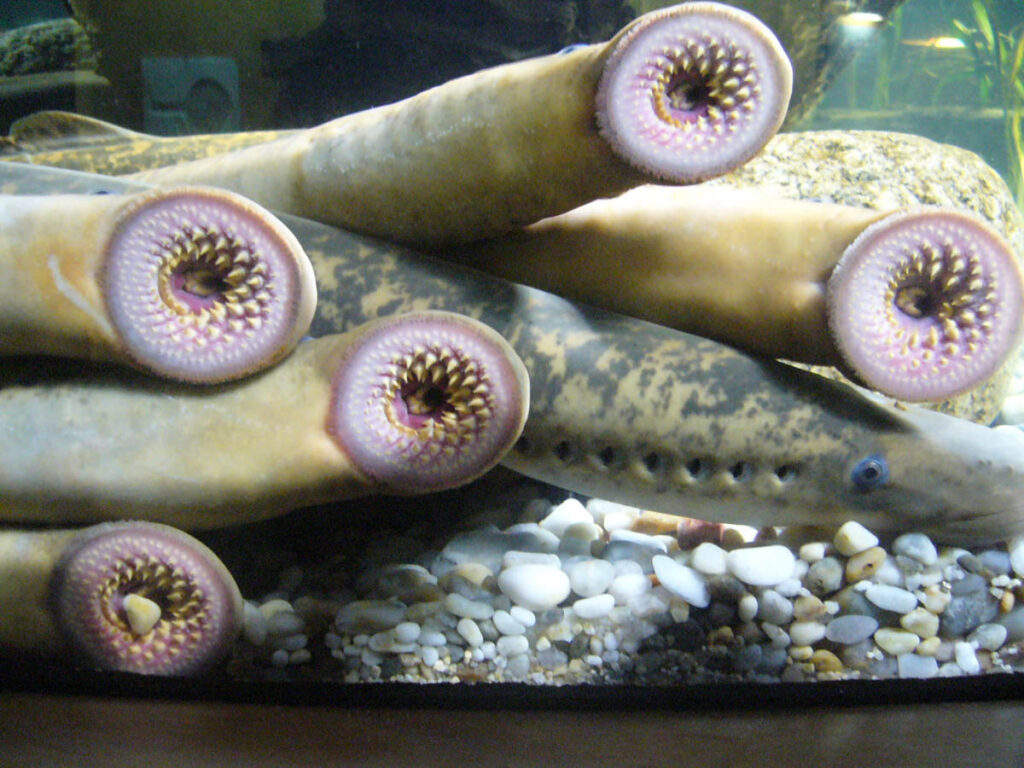The sea lamprey is an invasive species that has been kept under control in Canada’s Great Lakes for decades – until now. Erica Vella explains how the pandemic fueled a surge in the population of “vampire fish,” and what’s being done to stop them.
About Sea Lamprey aka Vampire Fish
The body of the sea lamprey is eel-like, with no paired fins. It has a jawless mouth that is round and sucker-like, as wide as or wider than the head, with sharp teeth arranged in many concentric circular rows. Behind the eye, there are seven branchial or gill-like openings. The dorsal and lateral parts of the body are olive or brown-yellow, with some black marblings and a lighter coloration on the belly. Adults can grow to be 120 cm (47 in) long and weigh up to 2.3 kg (5.1 lb).

The Welland Canal, which connects Lake Ontario and Lake Erie, was used as an entrance for sea lamprey into the Great Lakes in the early nineteenth century. Within ten years, they had gained access to all five Great Lakes, where they quickly set to work predating on the lakes’ commercially important fishes, including trout, whitefish, perch, and sturgeon.
The lamprey attaches itself to the skin of a fish with its suction cup-like mouth and rasps away tissue with its sharp, probing tongue and keratinized teeth. Lamphredin, a fluid produced in the lamprey’s mouth, prevents the victim’s blood from clotting. Victims usually die as a result of excessive blood loss or infection. A year and a half after metamorphosis, lampreys return to the river to spawn and die after one year of hematophagous feeding.
Their populations are now rapidly increasing, and lampreys are becoming a growing problem for commercial fishermen.
New methods for controlling sea lampreys are constantly being developed. Because sea lampreys communicate using odours, scientists have replicated these odours to improve the efficacy of current control methods.






